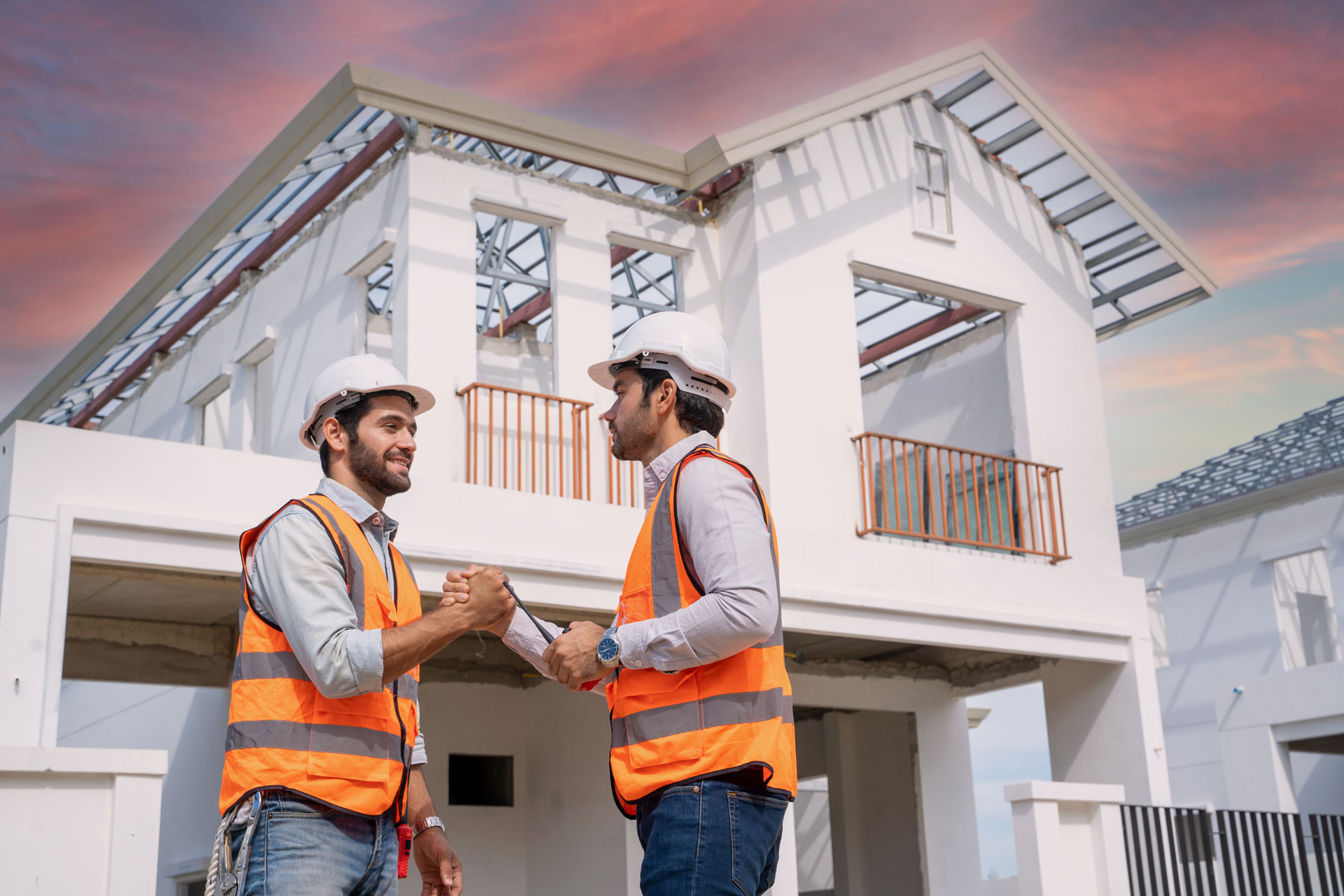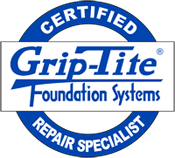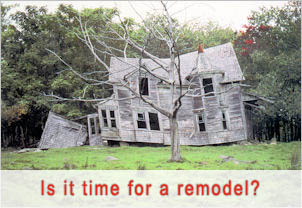
Design-build gives you one point of contact, faster timelines and cost control. The design-build approach brings design and build teams together under one roof, so designs and construction phases flow with fewer holdups. A lot of owners love how one team manages concepts, permits and builds work. That way, it’s easy to adapt plans or address problems. Costs are more transparent upfront and changes don’t mark up prices as much. The design-build team knows local regulations, which helps prevent delays. Homeowners have more input on decisions and experience consistent progress updates. These factors are why design-build is the preferred choice for Bay Area homeowners seeking to add rooms or renovate their homes.
Key Takeaways
- With design build, homeowners get one source of accountability — simplifying communication, decisions and project management for peace of mind and reliable outcomes.
- Budgeting established at the front of the design-build process aids cost transparency and mitigates the risk of surprise expenses, making it easier to stay within limits.
- Quicker projects are achievable because design and construction can overlap, and integrated teams work together in sync — leading to projects that get done sooner.
- Tight collaboration between designers, builders and homeowners improves communication, sparks innovative ideas and tackles obstacles effectively for a smoother project experience.
- Dealing with local regulations, seismic and neighborhood character is easier with design-build firms that know the area and compliance.
- By incorporating smart technology, sustainable materials and future-proof features in your home addition, you’re supporting energy efficiency, environmental responsibility and adaptability to evolving lifestyle needs.

Why Choose Design-Build?
Design-build is a project delivery method in which a single entity is responsible for both the design and construction of a project. This integrated approach resonates with so many homeowners in the market for home additions because it introduces organization, transparency and efficiency to inherently challenging projects. The approach is industry-recommended for minimizing risk, optimizing workflows, and enabling a more predictable result—essential attributes for any homeowner seeking to invest in their property.
Single Accountability
With design-build, you collaborate with a single team throughout the entire process. This transparent framework results in less confusion, fewer crossed wires, and more straightforward solutions. One call makes for quicker decisions — you don’t have to shuttle between firms or weigh competing advice. Project vision remains robust and consistent, as one team both plans and builds, minimizing the risk of mistakes or overlooked details. You can be confident that the final outcome embodies your needs because the team’s attention is directed towards your objectives with no competing agendas.
Budget Certainty
- Transparent, up-front pricing is established at the beginning of the design process.
- Transparent cost structure helps spot and avoid surprise expenses.
- Design-build teams collaborate to maintain budgetary control of expenditures.
- Detailed project planning helps spot risks and control overruns.
It’s a model that saves money — it minimizes opportunity for error and aligns all expenses from the beginning. By partnering with a single team, the entire process remains aligned with your budget.
Faster Timelines
The design and construction are interwoven, so you can get started with work before everything is 100% finalized. That saves weeks or months! With one team, changes or issues get solved quickly, not trapped in endless email pingpong. Because the workflow is seamless and efficient, your addition gets completed faster. Pre-approved designs and good planning equals less waiting for permits.
Seamless Collaboration
Everyone from architects to builders to homeowners stays on the same page. We design with your input so the result matches your lifestyle. Teams address issues as they arise, not retroactively. This collaboration inspires innovation and aids in designing clever, distinctive environments.
Quality Control
Quality is monitored from day one of the project. Every step, from plan to finish, gets reviewed to keep the build on course. You collaborate with experienced professionals who give a damn about quality. The result is a safe, well built addition that adds value.
The Value of Integrated Design
Integrated design is design and building as a single unit. This is crucial for Bay Area homeowners expanding their houses. It unifies all phases—design, construction, and management—under one roof, so the workflow is seamless for all. One team in charge prevents holes or confusion, and provides increased control over cost, time, and quality.
- Seamless workflow from start to finish
- Single point of accountability
- Better communication and less stress for homeowners
- Fast and smooth move from design to build
- Cost control and fewer mistakes
- No finger-pointing or miscommunication
- Convenience of having so many services available under one roof
- Often results in cost savings
Smart Technology
Smart home systems have found their way into a ton of design-build projects. Homeowners get to select such features as app-operated lights, security, and smart thermostats. These systems simplify control of your home from anywhere.
They assist in reducing energy consumption. For instance, smart sensors can power off lights or regulate temperature when nobody’s home — in turn keeping energy bills low. Some systems even monitor usage and recommend further savings.
A connected home enables modern requirements. Streaming, remote work, and online learning all go more smoothly in homes designed to support robust Wi-Fi and media systems. With a design-build team, these tech features are designed from the outset, not retrofitted.
New solutions such as automated shading, voice-activated controls, and smart appliances bring comfort and value. Having tech built-in makes the home both fit today’s lifestyle and ready for what comes next.
Sustainable Materials
Green building materials, for instance, aren’t just in anymore, they’re the norm in many places. Choices such as recycled steel, bamboo flooring and low VOC paints assist reduce your home’s environmental footprint.
Thoughtful selection of materials translates into improved air quality and reduced energy costs. Insulated windows and walls keep homes warmer in winter and cooler in summer, so less energy is required.
Tough stuff–composite decking or stone counters are durable and low maintenance. Over time, this saves on repair costs and waste.
Being design-build we frequently adhere to green building standards, ensuring that additions contribute to a healthier planet. This matters to a lot of homeowners who want to make responsible decisions.
Future-Proofing
Refreshable room layouts imply that spaces are adaptable as families expand or as requirements fluctuate.
Design for seamless upgrades, so new tech or features can slot in down the line.
Consider in advance smart wiring or outlets for future appliances.
Be prepared for fluctuations in the housing market with a timeless design.
Common Design-Build Additions
Design-build additions aim toward more efficient space, increased value, and increased comfort. In the Bay Area, where space is at a premium, smart design-build additions matter to homeowners looking for extra space or improved floorplans. These additions include everything from basic bathroom upgrades to massive second story jack and jill additions.
Second-Story
A second story addition is the premier option in areas where land is scarce and expensive. By building up instead of out, homeowners increase living space — frequently adding new bedrooms, a home office, or additional bathrooms — without sacrificing yard space. That can raise property value and bring in panoramic views or additional sunlight if the top floor is designed wisely.
These types of projects necessitate comprehensive planning and excellent design-build teams as upper-level additions require thoughtful structural calculations. Strengthening the foundation and core is crucial. The work frequently goes beyond surface level, incorporating things like rerouting utilities and upgrading support systems, so it’s not a small thing. The result is almost always worth it, particularly in crowded urban environments.
ADUs
Accessory dwelling units (ADUs) introduce versatile living areas, typically utilized for family members, visitors, or as rentals to generate additional revenue. As more cities embrace ADUs, these common design-build additions are becoming increasingly commonplace and easier to permit. Owners still need to investigate building codes and local regulations.
A smartly-scaled ADU cozies right into the main property, providing privacy and comfort. It might be a detached cottage, a garage conversion or a basement suite. The proper design-build team makes the unit align with the home’s appearance and comply with safety codes. ADUs increase property value, bring rental income dollars and can assist with aging parent scenarios.
Bump-Outs
Bump-outs are brilliant for adding space to jam-packed kitchens, cramped dining rooms, or compact living areas. These tiny design-build extensions, generally less than 4-8 square meters, elongate a space without requiring a full foundation or significant roof modifications.
The biggest benefit is price. Bump-outs are far less expensive than construction of full room additions. They accelerate the build too, so updates are quicker and less messy. Homeowners typically install them to create a breakfast nook, extend a bathroom, or expand an entryway—easy modifications that really impact.
With a great design-build partner, these mini-expansions blend in beautifully with the old parts of the house, preserving flow and style.
Other Common Additions
BR & BA Additions – Bedroom and bathroom additions allow families to expand as needs evolve. Kitchen expansions and outdoor kitchens with covered patios add daily comfort and resale value. Room additions of all sizes make old homes feel new, and every project has to balance budget, space, and neighborhood restrictions.

Beyond the Blueprint
Design-build for home additions goes beyond the blueprint, it’s a partnership that lasts. These ventures can take 1.5 to 2 years, so the individuals are as important as the schemes. Trust, communication, and expertise influence the approach and outcomes.
The Human Element
Close relationships are important. When selecting a design-build team, keep in mind you’ll be working side-by-side for a year or more. A great team hears, adjusts, and creates faith. One homeowner talked about how theirs was 6 months — with defined roles and a crew that managed both design and construction.
Open talk is the ticket. Sharing your vision and needs helps the team mold the space to your life. It’s not just what it does–it’s who you are. Homeowner input keeps projects on track and personal.
Your selections and flair shine brightest when you remain involved. Beginning to end, your response defines the result. This results in spaces that feel right—not just new.
A design-build team provides deep expertise. They walk you through hard decisions, like managing scope vs. Cost or dealing with complicated renovations like plumbing, electrical and kitchen remodels — sometimes all in the same project.
The Value Proposition
Feature | Design-Build | Traditional Approach |
Teamwork | High | Often Limited |
Timeline | Streamlined | Prone to Delays |
Cost Control | Strong | Often Unpredictable |
Vision Integration | Consistent | Can Fragment |
A good design-build job is one of the few things that can enhance resale value. Inspectors have remarked that some design-build work is the best they’ve seen. That reputation says timeless quality.
These projects add functionality and coziness to homes. Owners walk away with rooms carved for actual needs—more light, smarter storage, or better flow.
While the initial costs can appear to be higher, design-build can save you money over time. With a single team designing and building, less handoffs equals less mistakes and less waste. For those big projects (kitchen, bath, addition) this cohesiveness helps ward off expensive problems, like the kind that occur when architects and contractors don’t get in sync.
Making an Informed Decision
A design-build firm for your home addition in Concord, California has to think it through. Step one is to get information from various firms. Review their portfolio, experience, and diversity of projects. A company that has constructed both ADUs and conventional additions can demonstrate a broader range of ability. Request customer references or case studies. These can illuminate how the firm approaches real projects and addresses problems as they arise.
Homeowners should examine their own requirements and financial capacity prior to contacting companies. For instance, an ADU will have different costs and returns than a sunroom or additional bedroom. Other additions, like a full bath or kitchen extension, may be pricier but can add loads of value in the long run. Knowing what you desire comes in handy when you’re comparing offers. Don’t forget local regulations, such as building codes and permit processes. Concord has strict codes, particularly for seismic safety and energy usage. Overlooking these can cause hold-ups or additional expense.
It pays to inquire with the company about how they deal with city permits and inspections. Transparency about your schedule is crucial. The majority of room additions require three to six months from start to finish. Companies that provide specific return time frames and respect them can save you frustration. Establishing ground rules with your contractor, such as work hours and dust control, will help keep your home safe and reduce everyday frustration.
Consider the ecological footprint of your endeavor. Most companies have green building choices, such as recycled materials or energy-saving windows. For homeowners debating ADUs, home remodeling, or other alternatives, put the benefits and drawbacks of these side-by-side. ADUs can give you rental income, and a room addition might be best for your growing family. Ultimately, open communication with your design-build partner, diligent research, and an eye toward need and budget will guide you to the right decision.
Conclusion
In short, homeowners in Concord benefit from the design-build approach for additions because it reduces headaches and maintains momentum. Teams collaborate from inception to completion. Clients experience transparent plans, trustworthy budgets, and fast modifications when necessary. Local rules are managed by professionals who know the community’s requirements. From kitchen bump-outs to additional rooms, design-build streamlines every phase. No separate firms to juggle or updates to chase. The entire operation flows easily, so owners feel in charge and can anticipate what’s next. To get your own project underway or find out more, contact local design-build professionals. Real stories, trusted advice—let us help you plan with calm and get the results you need.
Frequently Asked Questions
1. What is the design-build approach for home additions?
It’s called design-build, and it combines design and construction services into one team. This simplifies communication and accelerates the process, minimizing delays and confusion.
2. Why do Concord homeowners prefer design-build for additions?
Homeowners in Concord choose design-build to simplify complex regulations and zoning. The integrated team handles local issues efficiently, ensuring a faster and less stressful path to completion.
3. How does design-build provide better value?
Design-build offers cost transparency and clear budgets up front. Homeowners sidestep surprise costs and can more easily adhere to their budgets.
4. What types of home additions are common with design-build?
Common design-build additions include extra bedrooms, enlarged kitchens, and new bathrooms. Some homeowners also add ADUs for additional living or rental income.
5. How does integrated design benefit homeowners?
Integrated design ensures your project fits your needs and style. It leads to improved coordination, fewer changes, and a more fluid construction process.
6. Can design-build help with Concord’s permit requirements?
Yes, experienced design-build teams understand Concord’s building codes and permit processes. They guide homeowners through the system and help prevent costly errors.
7. What should homeowners consider before choosing design-build?
Ask about the design-build team’s experience and reputation. Be sure to check references, review contracts, and communicate openly before you begin.
Your Dream Home Addition Built by Mares & Dow Construction & Skylights – Let’s Create the Extra Space You’ve Been Dreaming Of
Expand your home’s potential and enhance everyday living with a custom home addition from Mares & Dow Construction & Skylights. With over 40 years of construction experience, we specialize in high-quality additions that seamlessly integrate with your existing structure and lifestyle needs.
Whether you’re planning a new primary suite, second-story expansion, or an in-law unit, we tailor each addition to match your vision, your home’s architecture, and your long-term goals.
Key benefits of our general home addition services include:
• Adding valuable square footage for growing families or multi-use living
• Increasing your property’s value with expert design and construction
• Creating energy-efficient, modern living spaces tailored to your needs
Proudly serving Contra Costa County—including Alamo, Danville, Orinda, Martinez, and San Ramon—Mares & Dow Construction & Skylights is your trusted partner for functional, beautiful, and lasting home additions.
Contact Mares & Dow Construction & Skylights today for a free, no-obligation quote and let’s build your ideal home addition together.
Disclaimer
The materials available on this website are for informational and educational purposes only and are not intended to provide construction, legal, or professional advice. You should consult with a qualified general contractor or industry professional for advice concerning any specific construction project, remodeling plan, or structural concern. Do not act or refrain from acting based on any content included on this site without seeking appropriate professional guidance. The information presented on this website may not reflect the most current building codes, regulations, or industry best practices. No action should be taken in reliance on the information on this website. We disclaim all liability for actions taken or not taken based on any or all of the contents of this site to the fullest extent permitted by law.














 based on
based on 

